Uncategorized
A Review Of Lagos Transportation System From The Colonial Days Till Present
Published
5 years agoon
Lagos has come a long way in terms of development and all it makes it to be a mega city. Lagos was once a place where the colonial masters before the independence day take as their headquarters and where civilization starts from in Nigeria. Lagos being a center of aquatic splendor is surrounded by water. It is estimated that Lagos is 65% water and only 35% an Island. In a piece attributed to Naptu2, it was said that an important factor in providing transport facilities in Lagos state has always been the aquatic nature of the state.
Lagos Island which covers a mere 1.55 sq. miles was a rather small piece of land. Yet, up to 1950, 65.4 percent of the population lived there. No doubt a contributory factor to this situation could be found in the lack of adequate transport facilities which would have encouraged people to live on the mainland and shuttle to the island daily for business.
It should be noted that besides the small size of the island, many parts of it were also swampy or waterlogged”.
Boats, therefore, became an important means of transport in the area now known as Lagos.
Scholars are now suggesting that boat making industry thrived in Lagos as a result of the availability of more durable wood supplied by her eastern neighbours.
The situation changed with the commissioning of the Carter (1901), Eko (1975) and Third Mainland (1991) bridges which connect Lagos Island to Lagos Mainland. Road transport gained primacy as the most important means of transport in Lagos.
In this piece, we will look at Lagos transformation in terms of transportation. It should be noted that Lagos is swampy but it has managed to beat all odds by staying afloat in terms of transportation and its still gunning for its mega-city status. It is worthy of mention that Lagos has used all means of transportation from rail to sea and to road transportation. Our study is analyzing the development in terms of road transportation in Lagos but this can not be done without first looking at where Lagos is coming from before advancing to this present stage.
1. Boat/Canoe
Before the arrival of the colonial masters, Lagos has always existed. Lagos residents make sure of canoe and boat as their means of transportation at this time. People living in Badagry can only get to Isale Eko only through this means and other parts of the state. It should be noted that besides the small size of the island, many parts of it were also swampy or waterlogged”.
2. Tram Train
What many do not know is that Lagos has always made sure of train services. According to reports, in 1895 the Lagos Government Railway began to force its way from Iddo, on the mainland, to Ibadan and was opened six years later on March 4, 1901. Carter Bridge was completed the same year, construction having commenced in 1896, to connect Lagos with the mainland. Because of the mistake of terminating the railway at Iddo, Lagos, the administrative capital and port of the Colony of Nigeria, was without any public (or indeed, at that time, wheeled) transport to connect it with the railhead. The opening of the Lagos Steam Tramway took place on May 23, 1902.
These following vehicles have grace Lagos roads since bus transportation is introduced to Lagos in 1920.
3a. Road Transportation
In the 1920s, road-based bus transportation was pioneered in Lagos by two Nigerians, Mrs Charlotte Olajumoke Obasa (a leading indigenous entrepreneur of that time) and W.A. Dawodu. This was followed by the establishment of J.N. Zarpas, a company owned by Levantine expatriates. According to the report, The total sum of £500,000 paid for the Zarpas assets included £392,183 for the fixed assets, £85,185 for goodwill; and £22,632 for current assets. The company was re-named the Lagos Municipal Transport Service (LMTS). This meant that the government had taken over the bulk of the municipal transport service. Zarpas dominated the Lagos transportation scene until their buses were acquired by the Lagos Town Council in 1958 to form the Lagos Municipal Transport Service (LMTS).
b. Bolekaja
For those who are old enough to see these buses on Lagos roads and in some states across the country, they are the major means of transportation. As a little boy going to school in Apapa, Bolekaja used to be the means of transportation to my destination in those days. Bolekaja debuts in the 1960s and it is owned by the Yorubas who decided to go into the transport business. Bolekaja, which literally means “come down and let’s fight” in Yoruba is an average sized wood axial lorry that had only one wooden door at the passenger cabin at the back for passengers to embark and disembark. The sitting arrangement in the lorry (which was often overcrowded) and the single entrance and exit point often led to fisticuffs between passengers who would tell each other to “come down let’s fight” (bolekaja).
Bolekaja were usually made from Bedford lorry heads and locally made wooden passenger compartments. The government later banned the use of bolekaja for commercial passenger transport services and they are now used to carry foodstuff in rural communities. Bedford buses are still used by those selling sands, gravels and other building materials in Lagos and some parts in the South West.
c. Molue
As at 2009, Molues are still seen in some parts of Lagos, a visit towards Oshodi, Sango-Ota you will still see them operating. Molues have come a long way with Lagos. Molues took over when the government banned the use of Bolekaja for commercial passenger transport services. The molue is a large commercial passenger bus usually painted yellow and black. When bolekaja were banned, some transport operators replaced the wooden passenger cabins of their bolekaja with locally made metallic bus compartments. Thus the first molue buses were of the Bedford variety. However, with time, the Mercedes Benz 911 flatbed truck, which had been fitted with locally made passenger compartments became the preferred brand for molue operators.
It is not clear what the origin of the term molue is. Some say that Molue is the corruption of “maul him”, a description given to the vehicle by the city’s elite who are piqued by the incessant manner the large-bodied buses tear clothes and even flesh of passengers while either entering or disembarking as they reach their destinations. Others say, no thanks to the recklessness of ‘Danfo’ buses (smaller commuter buses especially the Volkswagen types), conductors on the converted buses often admonished their drivers to ‘Molue’ (a corruption of the word remould) the smaller buses when they obstruct the larger ones. From that moment on the term, ‘Molue’ became associated with the big bully nature of the 911 model of commercial vehicles in urban Lagos”.
Molue buses were a common sight on Lagos roads. They were the king of the roads. From Ojota to Ketu or Ikorodu and from there to Iddo, a major terminus made popular by the now comatose railway system, to Oyingbo, a bustling transportation haven to Oshodi, Costain, to Obalende, and from there to Apapa, then Orile, Iganmu to Mile 2 and further still to Okokomaiko, on the ever-busy Badagry highway and on the southern fringes of Iyana-Ipaja, Pen Cinema, Egbeda, to Idimu and Ijegun, and other emerging satellite towns of the state, such as Alimosho, the Lagos Molue at a time, captured the terrain, becoming an opium of the commuting masses.
These buses were so popular that they were even printed on postcards, greeting cards and favoured as the face of a developing city-state of Lagos. Because it carries more passengers, fares on Molue are often times cheaper than the smaller commuter buses. The afro-beat maestro, Fela Anikulapo-Kuti sang about them in his song “Suffering and Smiling”, singing that in a molue we had “44 sitting, 99 standing”. The 1980s group, “Too Cool for Zero” also paid tribute to the king of the road in their song “Molue, Lagos City Transport”.
From wherever you boarded them, a ride in a Molue was an admixture of fun and tears. There, you might be unlucky to have your pocket picked by one of the extremely smart street urchins regarded as area boys, who deliberately crowded the two entrances, making ingress and egress a headache to passengers.
There was no decency inside the Molue. After filling all the seats, the spillover passengers were made to hang on a rail in what was usually called ‘standing’ in the buses. Passengers were so tightly packed that they made nonsense of Fela Anikulapo-Kuti’s mimickery of their plight in the song, Suffering, and Smiling. The air inside the Molue most times are stale, passengers have to cope with the body odours until fresh air permeates the vehicle.
“O wa legbe e o, (there is a vehicle by your side), Wole wa, (enter this side of the road), O nbo le (a passenger is dropping) or more lewd ones like; Wole pelu senji e o, (enter this bus with the correct fare), O loyun o ponmo o (this passenger, obviously a woman is pregnant and carrying a baby), are few of the jargons of the Molue conductor.
The driver is ever in a hurry. Apart from when it takes off from its major park, Molue never stops. Whether you are dropping off the vehicle or boarding, you have to develop a running foot, as you practically jump off, or rush in, on the motion. This act which has become the Achilles heels of many hapless commuters have somewhat become the defining mode of recognizing who just migrated to Lagos and who is a resident.
d. LSTC
In 1962, the Lagos Town Council was re-named the Lagos City Council and the name of the transport service was correspondingly changed to Lagos City Transport Service. Following the creation of Lagos State in 1967, the state government took over the running of the transport service and, in 1974 renamed it the Lagos State Transport Corporation (LSTC). A veritable successor to the Zarpas transport service, the L.S.T.C. took off from the old buildings of the Levantine firm.
The Lagos State Transport Corporation (LSTC) was a state-owned company that ran transport services in Lagos. The buses were mainly Mercedes Benz buses which were painted red and white.
They had a free service, called scholars bus, for (uninformed) school children and they also had air-conditioned buses for regular fare-paying commuters.
There were bus terminuses and depots at Keffi Street Ikoyi, Simpson Street Lagos Island, Race Course/Tafawa Balewa Square, etc.
Governor Rasaki abandoned his official car and used coaster buses instead because he felt that his motorcade would be too long if he and his commissioners used their official cars. He donated the coaster buses to the LSTC when he was leaving office in 1991.
The LSTC covered routes beyond the old metropolitan boundary, as it was a state rather than a city enterprise. On the whole, its record of operation was generally unsatisfactory: in no time, the corporation was run aground as a result of mismanagement and sabotage. The corporation’s buses were over-manned, with as many as twelve employees per bus! They were slow and overcrowded and, compared to the “molues” and “danfos”, wasted a lot of time at the bus stops.
e. Danfo
The etymology of “Danfo” is enmeshed in controversy. “Danfo” or “dafo”. according to some sources, was derived from the tendency for commuters to sit separately, hence the expression “danfo gedegbe” (“alone” or “unattached.”)
Danfo is a minibus taxi that, like the molue and it emerged in the 1970s. The origin of the word “danfo” is not certain, but some say it means “hurry” in Yoruba.
The first danfo buses were Volkswagen Kombi buses which seat twelve passengers. Other models are the Volkswagen Transporter (popularly known as FEDECO after the Federal Electoral Commission of 1979-1983 which had a fleet of transporter buses), the Toyota Hiace, the Nissan Urvan, Mitsubishi L300, etc.
The danfo has become the main means of commercial transport in Lagos because of the fact that it plies virtually all bus routes.
After a spate of kidnappings in the early 1980s, the government decreed that all danfo and taxi drivers must be members of the National Union of Road Transport Workers (NURTW) and display their NURTW identity cards (which must contain their passport photographs) in their vehicles.
A ride in a danfo bus can be quite uncomfortable. Passengers are often packed together like sardines. Danfo owners usually add more rows of seats to the bus, (to make it a 14-18 seater bus) which leaves passengers with little or no leg room. Some drivers blare loud fuji music from huge loudspeakers that are placed beneath the seats. Some danfo buses have lost the padding that’s placed in the ceiling of the bus to insulate passengers from heat or their windows are permanently sealed creating a very hot and stuffy atmosphere within the bus.
At most bus stops in Lagos, there are women or young ladies who peddle illicit gin and other alcoholic brews which the drivers consume. The spirits from these alcoholic brews possess the danfo driver who takes off on a roller coaster ride, ignoring traffic lights, overtaking at bends and generally posing a danger to himself and other road users. Sometimes a passenger might unknowingly board a danfo bus that’s driven by one of these demon possessed fellows.
This, coupled with the fact that most danfos look like moving tin cans, means that other drivers must be wary of them. A danfo driver does not mind if his bus is scratched (the paint job is of poor quality anyway and the danfo is perpetually in need of a new coat of paint) or dented, since it already looks like a tin can, but the private car owner would not want his new Mercedes or BMW to suffer the same fate. Therefore, danfo drivers change lanes dangerously and are generally a danger to other road users.
Since the early 2000s the Lagos State Government has tried to reform or ban the danfo system. The Tinubu administration tried to ensure that danfo buses were well maintained by requiring them to pass a Ministry of Transport (MOT) test, but the danfo drivers went on strike to protest the policy and the government had to cave in to their demands when stranded citizens started complaining.
f. Federal Urban Mass Transit System
In 1988 the Babangida Administration increased the price of petrol. This led to mass protests. In order to cushion the effect of the price rise, the government put in place the Federal Urban Mass Transit system.
Through this system, the Federal Government bought buses and distributed them to selected transporters and other organisations. The buses were high capacity buses (usually of the Mercedes Benz 1414 model). These buses were usually not painted in the Lagos State commercial colours of yellow and black, but in the colours of the organisation that owned the bus. For example, we had the Labour Mass Transit buses that were painted in the colours of the Nigerian Labour Congress.
A common feature with these buses is that they had “Federal Assisted Urban Mass Transit” written on them.
The Federal Military Government of General Ibrahim Babangida intervened in the chaotic public transit sector by launching the Federal Urban Mass Transit Programme (FUMTP) in 1988. The FUMTP was aimed at achieving the following objectives:
– Planning and advising on the implementation of the FUMTP at the federal and state levels.
– Providing financial, technical and project assistance to mass transit agencies at the federal and state levels, in addition to labour unions and commercial transport operators.
– Developing and issuing operating guidelines and private manpower training for the aforementioned operators.
g. City Bus
 |
| Courtesy of naptu2 |
Many people that were in Lagos close to 15 years will remember this era very well. This is when the Bola Ahmed Tinubu licensed the cross-country’s City Bus to operate in Lagos. In 2003 the Lagos State Government decided to ban Molue and Danfo buses from operating in Ikoyi, Victoria Island and Lekki. The ban was the initial phase of a policy by which the government hoped to sanitize transport in Lagos. It was expected that the ban would subsequently be extended to other parts of the state. Hundreds of policemen and Lagos State Traffic Management Agency (LASTMA) officials were stationed in Lekki, Ikoyi and Victoria Island to prevent danfo and molue buses from accessing those districts.
The government licensed City Bus, a company that was set up by Cross Country Limited, to carry out transport business in Ikoyi, Lekki, and V.I. Cross Country runs inter-state transport services.
City Bus boasted tie wearing graduate drivers and conductors and airconditioned and neat buses and minibuses. The buses were painted white, with the blue-white-black city bus logo painted on the sides.
However, it fares were way too high in some places and reasonable in others. For example, a bus ride from Obalende to Falomo cost 50 naira. The yellow and black danfo buses charged 20 naira at the time. There were also not enough buses.
Chaos ensued when agberos, who had been deprived of the money that they usually extort from danfo drivers and students of the Nigerian Institute of Oceanography and Marine Research, who could not get buses to go to school, attacked City Buses and damaged them. Commuters were stuck at bus stops because there were not enough buses. Huge crowds developed at the bus stops.
The government had to back down and allow the NURTW to create companies that would take part in the transport scheme. One of such companies is CMS Taxi and Motors Nigeria Limited (T&M), which runs a service, using buses that are painted green and white.
Standards broke down. In terms of quality of service, maintenance of buses, etc, the T&M buses were no different from the black and white danfo buses. The only difference is that the T&M buses are painted green and white, while the regular danfo buses are painted yellow and black.
City Bus stopped running transport services because it did not make sense to compete against competitors that could charge low fares and use poor quality buses to ply the same routes. Instead, City Bus gave rights to regular danfo bus drivers to use buses painted in City Bus colours.
As a result of this policy, commercial buses that ply routes in Ikoyi, Victoria Island and Lekki are painted either green and white or white, while commercial buses that ply routes in the rest of Lagos are painted yellow and black. It is worthy of note that City Buses still run and operate in Lagos but under new management, they have fixed their prices to match with the teeming demand of the populace. They can be found virtually everywhere from Obalende to Unilag and lots more.
h. BRT Bus Transit
The Lagos Bus Rapid Transit System, also known as Lagos BRT, is bus rapid transit system in Lagos State, Nigeria, which is owned by the Lagos Metropolitan Transport Authority (LAMATA).
The first phase of the Lagos BRT was opened on March 24, 2008, with 100 buses, although it was initially slated for opening in November 2007 (the initiative to build the system was initiated by the government of the previous governor, Bola Tinubu). It went from Mile 12 through Ikorodu Road and Funsho Williams Avenue up to CMS. At the time the BRT Corridor was 22 km in length.
One of the benefits of the BRT system is the physically segregated lanes.
The BRT system in Lagos is run on 3 models; (1) segregated lanes (2) priority lanes (3) regular bus service.
1) Segregated lanes: A concrete divider is erected on the road to section off one lane from the others. The sectioned off lane is reserved for BRT buses. This ensures that the BRT buses are not caught up in traffic jams.
2) Priority lanes: A yellow line is drawn on the road to demarcate the BRT lane. At peak periods (rush hour, etc) this lane is reserved for BRT buses. At other times any vehicle can use this lane.
3) Regular bus service: There is no segregated or priority BRT lane.
The Lagos State Government maintains the BRT lanes, while concessionaires procure and maintain the buses.
Concessionaires on the BRT scheme include LAGBUS Asset Management Company (which is owned by the Lagos State Government), National Union of Road Transport Workers (NURTW) Cooperative, Trade Union Congress of Nigeria (TUC), etc.
Concessionaires also make extra income via advertisements posted on the sides of the buses. Paid adverts are also played on the Flat screen TVs.
New routes have been opened including Yaba to CMS, Obalende to Ikorodu, Obalende to Ajah, Oshodi to CMS, Oshodi to Obalende, Broad Street to Egbeda, etc.
Some of the routes have segregated lanes (eg Yaba to CMS), while some use priority lanes (eg Obalende to Oshodi).
On Ikorodu Road, the introduction of the BRT system has led to restrictions on which vehicle can ply which lane. Danfo and molue buses are restricted to the service lanes, private vehicles can ply the express and the service lanes, while only BRT buses are allowed to ply the BRT lane.
In 2018, the Lagos State Governor, Mr. Akinwunmi Ambode roll out some new BRT buses to compete with others advanced city buses. The 5000 air-conditioned buses are said to eradicate Molue, Keke Napep in the state. The BRT buses of two types, the mini-buses and the longer ones.
We will decide not to talk about the Lagos Rail and Lagos Waterways as the will be featured in our subsequent edition
Credits:
Naija Chronicles,
Urban transport in Metropolitan Lagos since the colonial period
Lagos State Handbook 1987
AutoReportNG is your one-stop place for quality news on roads, cars, and anything pertaining to mobility. We keep track of all current news in road, rails, and aviation. We are known to true, factual and investigative news.

You may like
-
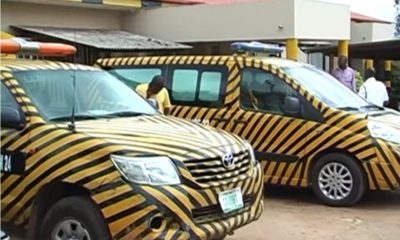

VIO Seizes 50 Rickety Commercial Vehicles In Lagos
-


See The New Look Of Third Mainland Bridge After Weeks Of Repairs
-
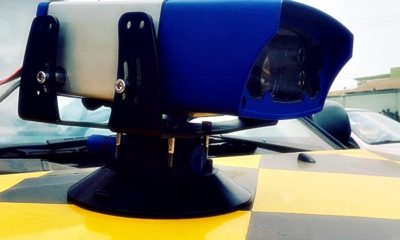

LASG Traffic Cameras Detected 850,000 Violations Says Commissioner
-
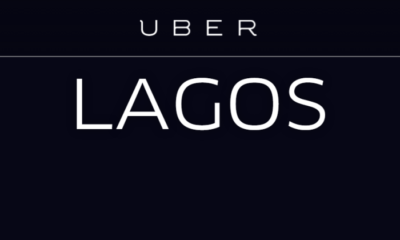

LASG Set To Sanction Uber For Non-Adherence To Data-Sharing Agreements
-


FEC Approves N1.067tn For Section Of 700km Coastal Highway
-


Lagos To Deploy 10,000 Neighborhood Officials For State Police — Sanwo-Olu















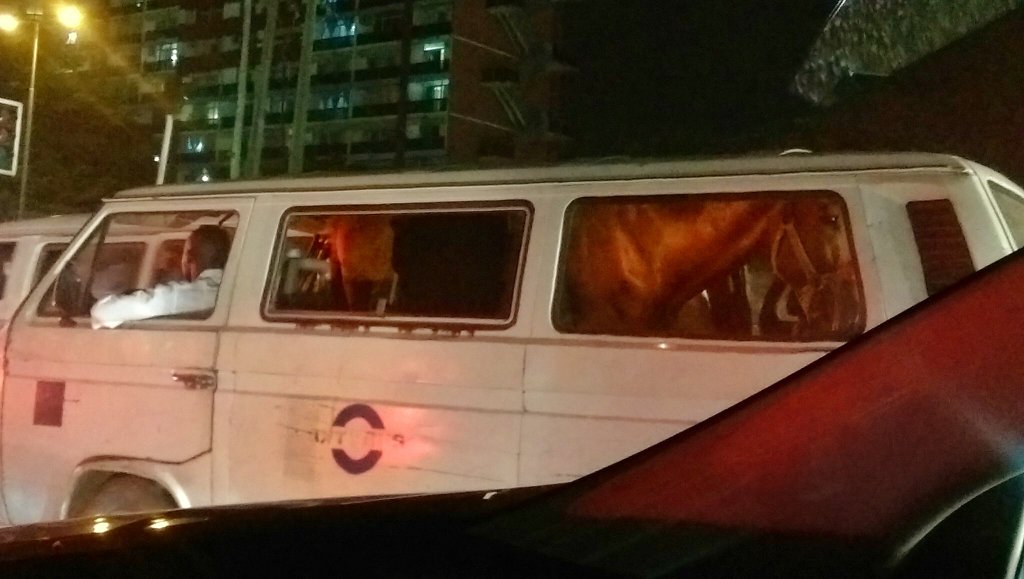



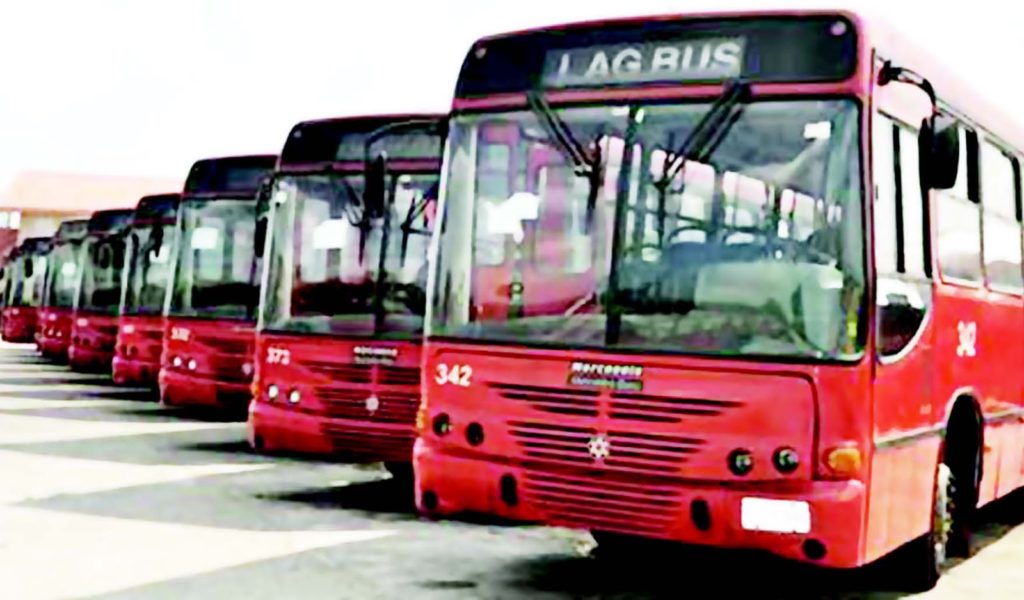
You must be logged in to post a comment Login